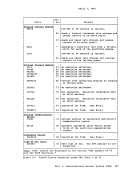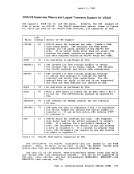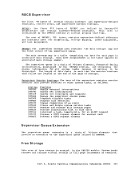The abnormal termination of an operating system (such as as or
system on a real machine. Refer to publications for that operating
facilities may be used to help you gather the information you need.
Because certain operating systems
their virtual storage themselves,
virtual storage locations should be used only in virtual=real storage
space with
printer.
The
machine's reader spool file. Installations that have installed the
VM/Interactive
may use it to process the dump.
dump with a user-written program.
If you choose to run a standalone dump program to dump the storage in
your virtual machine, be sure to specify the
issue the
storage is overlaid by
processing using the
and display and alter registers, control words (such as the
data areas. The
can gather information at various stages
and represents the system at only one particular time. Debugging on a
virtual machine can often be more flexible than debugging on a real
machine.
machine check occurs in that virtual machine. Hardware errors usually
cause this type of virtual machine termination. The following message:
DMKMCH616I MACHINE CHECK;
appears on the processor console.
If the message:
DMKMCT621I MACHINE CHECK;
and the attached processor is
is placed into console function mode and can be made to continue
processing on the main processor by the entry of a BEGIN command.
Channel checks no longer cause the virtual machine to be
they did in earlier releases of
associated with attempts to recover from a channel check, see the
channel model-dependent functions described in the















































































































































































































































































































































































































































